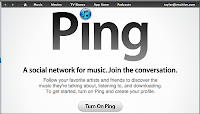"The leader must constantly check the pulse of the tribe to hear what they’re feeling and thinking. This can be helpful in determining just what the tribe likes and dislikes about you and your music. Maybe there’s a direction that you briefly touched upon on your last record that drove the tribe wild, or maybe one that they hated? You might choose to follow your musical instincts instead of listening to tribal feedback, but at least you won’t be surprised by the resulting reaction.
Taking the tribe’s pulse also lifts the mood of the tribe since interaction with the leader is always appreciated and results in more participation. Showing your appreciation for their participation fosters even greater loyalty and participation and gets them invested emotionally and intellectually.
So how do you take the tribe’s pulse? You ask them questions or ask them to help you.
1) Ask them which piece of merch they prefer.
2) Ask them about the best venues in their area, why they like them and if they’d prefer to see you there.
3) Ask them what song they’d love to hear you cover.
4)Ask them who their favorite artists are (this answer is great for other elements of social marketing as mentioned in other sections of the book).
5) Ask them to judge the artwork on your next release, then when they respond, reward them. Give a free T-shirt to the first 10 responses. Send them a secret link to download a track only available to them. Give a personal shout out to some of the best responses.
All of the above makes them feel special and great about belonging, and keeps the interest in the tribe high."
-----------------------------------
Follow me on Twitter for daily news and updates on production and the music business.
Check out my Big Picture blog for discussion on common music, engineering and production tips and tricks.



